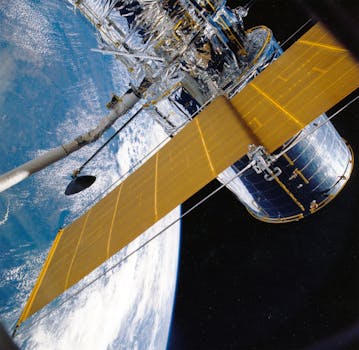LEO Satellites: Revolutionizing Global Connectivity with Low Earth Orbit Technology

LEO Satellites: Revolutionizing Global Connectivity with Low Earth Orbit Technology
LEO satellites, or Low Earth Orbit satellites, are a type of artificial satellite that orbits the Earth at an altitude of around 160 to 2,000 kilometers. This relatively low orbit allows LEO satellites to provide low latency and high-speed connectivity, making them an attractive solution for various applications, including telecommunications, navigation, and Earth observation.
The use of LEO satellites is not new, but recent advancements in technology have made them more efficient, cost-effective, and accessible. With the help of LEO satellites, companies and organizations can now provide global connectivity, bridging the digital divide and enabling remote communities to access essential services such as healthcare, education, and finance.
How LEO Satellites Work
LEO satellites work by transmitting and receiving signals to and from Earth-based stations or other satellites. They use a network of ground stations and inter-satellite links to provide seamless connectivity and coverage. LEO satellites are typically launched into orbit using a rocket, and once in orbit, they use their onboard propulsion system to maintain their position and adjust their orbit as needed.
One of the key advantages of LEO satellites is their low latency, which is the time it takes for a signal to travel from the Earth to the satellite and back. Because LEO satellites are closer to the Earth than traditional geostationary satellites, they offer latency as low as 20-30 milliseconds, making them ideal for real-time applications such as video conferencing, online gaming, and virtual reality.
Applications of LEO Satellites
LEO satellites have a wide range of applications, including telecommunications, navigation, Earth observation, and scientific research. They can provide broadband internet access to remote and underserved communities, enabling them to access essential services and participate in the global economy.
In addition to telecommunications, LEO satellites are also used for navigation, providing location information and timing signals to GPS receivers on the ground. They can also be used for Earth observation, monitoring weather patterns, tracking climate change, and detecting natural disasters.
Challenges and Future Developments
Despite the many advantages of LEO satellites, there are also challenges and limitations to their use. One of the main challenges is the high cost of launching and maintaining a constellation of LEO satellites. Additionally, LEO satellites have a relatively short lifespan, typically ranging from 5 to 10 years, which means they need to be replaced regularly.
However, as technology continues to evolve, we can expect to see significant improvements in the efficiency, cost-effectiveness, and capabilities of LEO satellites. For example, the development of reusable rockets and advanced propulsion systems is expected to reduce the cost of launching LEO satellites, making them more accessible to a wider range of organizations and companies.
In conclusion, LEO satellites are revolutionizing global connectivity and transforming the way we communicate and access data. With their low latency and high-speed connectivity, LEO satellites are poised to bridge the digital divide and enable remote communities to access essential services. As technology continues to evolve, we can expect to see significant improvements in the efficiency, cost-effectiveness, and capabilities of LEO satellites, enabling them to play an even more critical role in shaping the future of global connectivity.



